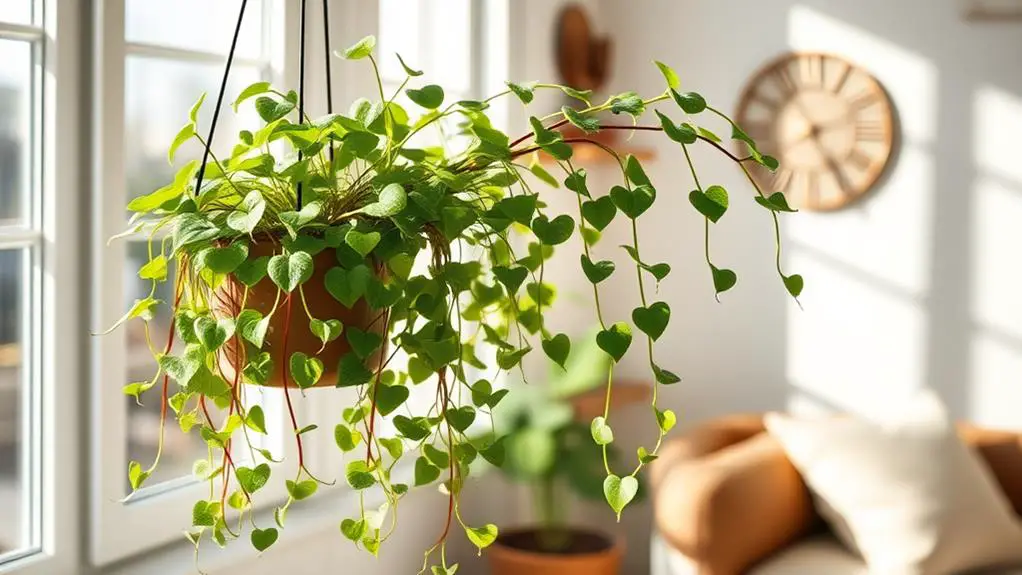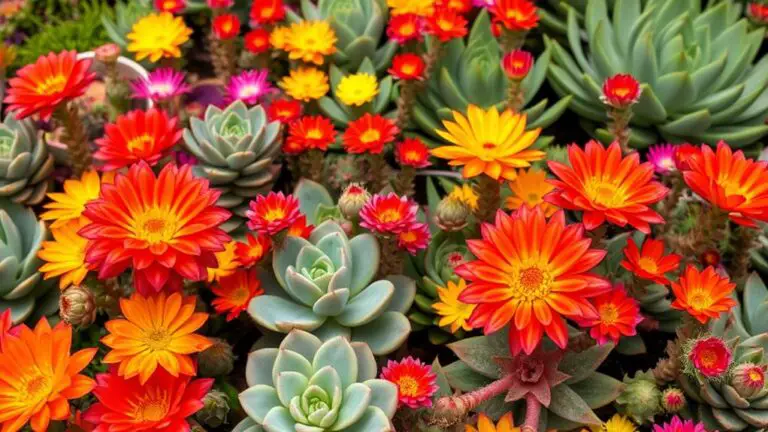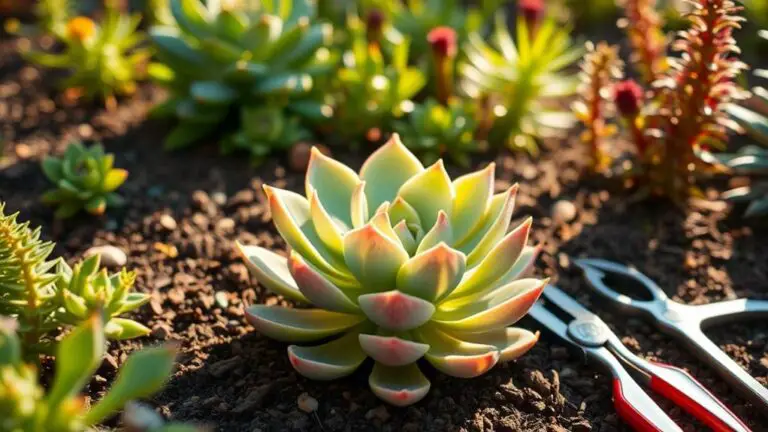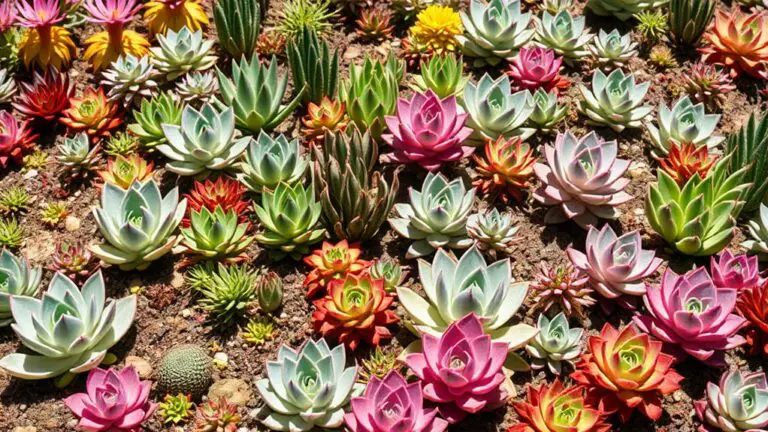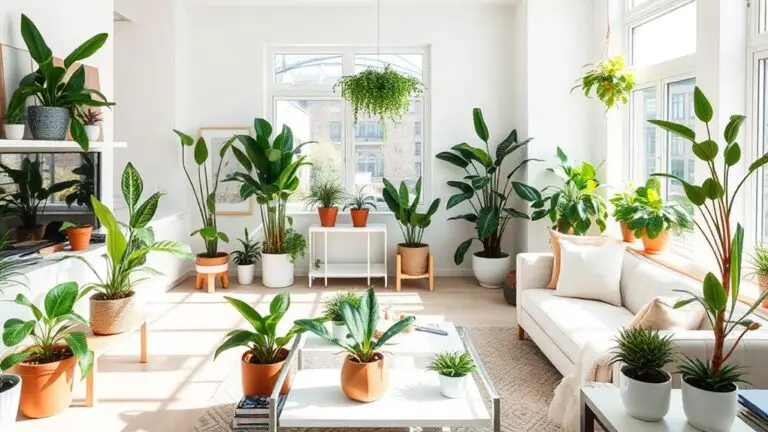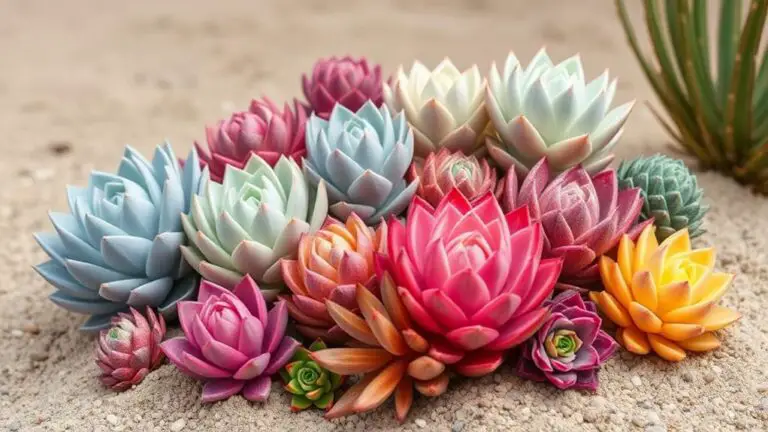7 Easy Steps to String of Dolphins Plant Care
Caring for a String of Dolphins plant doesn't have to be complicated. Start by ensuring it gets bright, indirect light, as direct sunlight can harm the delicate leaves. You'll want to water only when the soil is completely dry and make sure it has excellent drainage. Maintaining indoor temperatures between 65°F and 80°F is vital, along with misting monthly to keep humidity levels low. But that's just the beginning. There are a few more essential steps to guarantee your plant remains healthy and vibrant, and understanding them can make all the difference. So, what's next in your plant care routine?
Light Requirements
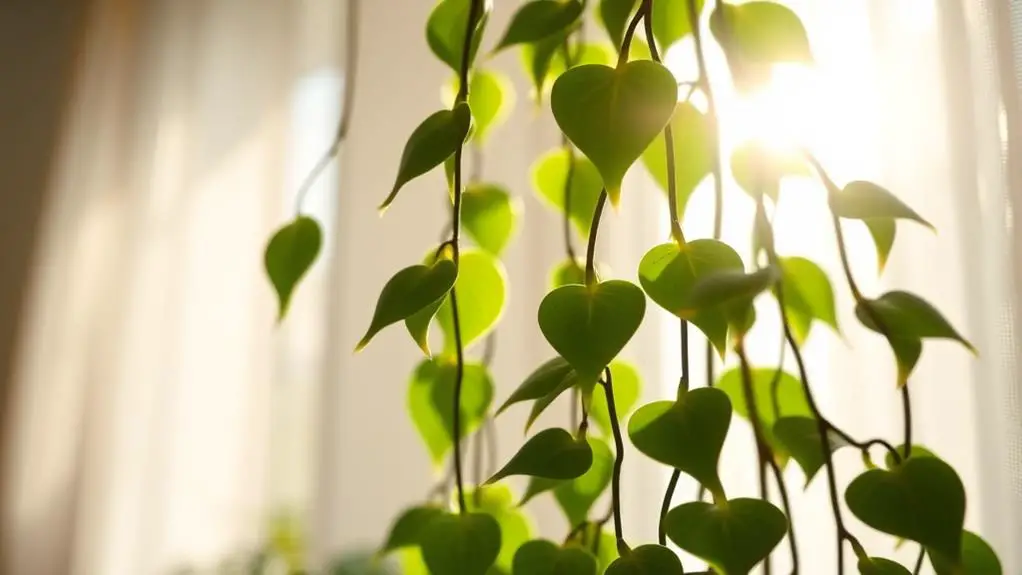
Guaranteeing proper light exposure is essential for the health and growth of your String of Dolphins plant. This plant thrives in bright, indirect light, making southern windows ideal.
You can also place it in eastern or western windows to guarantee it gets the necessary light exposure. Remember, while it can tolerate up to 2 hours of morning sunlight, avoid direct sunlight to prevent leaf burn, which can harm the plant.
For best growth, your String of Dolphins should receive at least 6 hours of sunlight daily when growing indoors.
If you're growing it outside, limit its exposure to morning light and bring it indoors when temperatures drop below 50°F. Following these guidelines will help your plant flourish beautifully.
Watering Guidelines
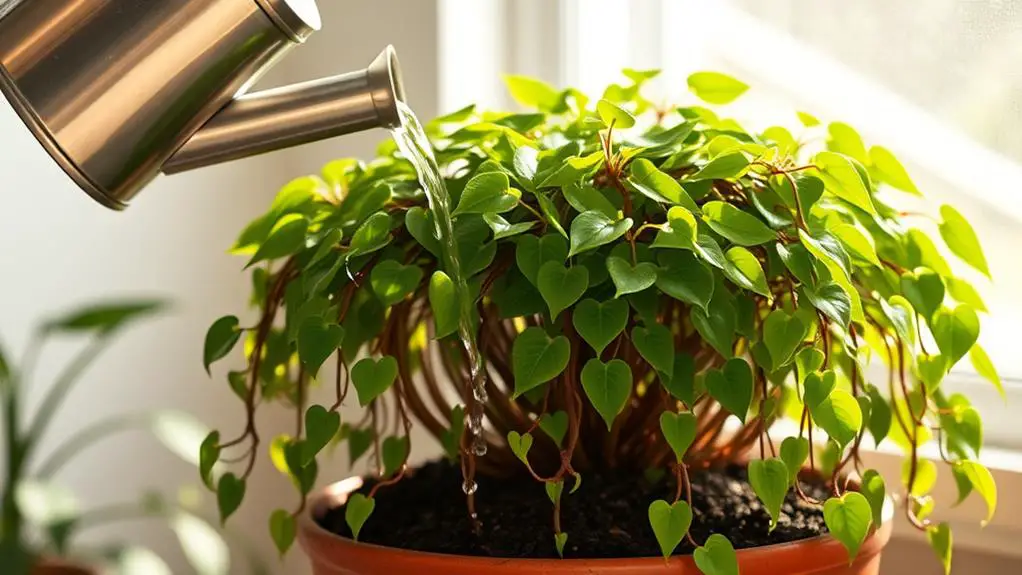
To keep your String of Dolphins healthy, water it when the soil moisture reaches 2-3 on a moisture meter.
Try using the bottom-up watering method by placing the pot in a saucer with water for 15 minutes so the soil can absorb moisture evenly.
Make sure the soil dries out completely between waterings to avoid root rot.
Bottom-Up Watering Method
Wondering how to keep your String of Dolphins plant hydrated without risking root rot? Try the bottom-up watering method. Place the pot in a saucer filled with water for 15 minutes. This method allows the soil to absorb moisture from the bottom up, guaranteeing it's adequately saturated without excess water at the bottom. It helps prevent leaf dampness, reducing fungal issues and promoting plant health. Water when the soil moisture meter reads 2-3, then allow the soil to dry out completely between waterings. This practice is ideal for succulents like the String of Dolphins.
| Step | Description |
|---|---|
| 1 | Place pot in saucer of water |
| 2 | Wait 15 minutes |
| 3 | Verify soil is adequately saturated |
| 4 | Remove pot to prevent excess water accumulation |
| 5 | Allow soil to dry out between waterings |
Soil Moisture Monitoring
Keeping an eye on soil moisture is critical to the health of your String of Dolphins plant. Use a moisture meter to monitor it, and water when the reading reaches 2-3 to avoid overwatering and root rot.
During the growing season, let the soil dry out completely between waterings, usually about a week. In winter, reduce watering frequency to once a month.
You can also employ the "squish test" to check hydration; firm leaves mean the plant has enough water, while squishy ones need more.
Always inspect for signs of overwatering, like yellowing leaves, and adjust accordingly. This approach guarantees your plant thrives without the risk of root rot or dehydration.
Temperature & Humidity

When caring for your String of Dolphins plant, aim to keep the indoor temperature between 65°F and 80°F for the best growth.
Although it can handle temperatures as low as 40°F, bring it indoors if it gets below 50°F to avoid frost damage.
This plant prefers low humidity, so mist it sparingly—once a month is enough to prevent rot.
Optimal Temperature Range
To guarantee your String of Dolphins plant thrives, aim to keep the indoor temperature between 65°F and 80°F. This range promotes healthy growth and a stable environment. Here's how to ascertain ideal conditions:
- Indoor Temperature: Maintain a consistent temperature between 65°F and 80°F.
- Winter Protection: During winter, protect the plant from frost and avoid temperatures below 40°F.
- Ideal Blooming: For blooming, let the temperature drop to around 59°F during late autumn as the plant gears up for the growing season.
- Prevent Stress: Avoid sudden temperature changes to prevent stress.
The String of Dolphins prefers low humidity and thrives in typical indoor conditions.
With the right care, your plant will flourish beautifully.
Humidity Requirements
Maintaining the right humidity is essential for the health of your String of Dolphins plant. These succulents have low humidity requirements, thriving in average household humidity levels. Minimal misting, done monthly, helps maintain hydration without risking root rot. Avoid high humidity environments to prevent moisture-related issues. Here's a quick guide:
| Humidity Level | Effect on Plant | Recommendation |
|---|---|---|
| Low Humidity | Ideal growth | Ideal for String of Dolphins |
| Average Household | Healthy and stable | Perfect for indoor settings |
| High Humidity | Risk of root rot | Avoid |
| Minimal Misting | Maintains hydration | Mist monthly |
Keep your plant in an environment with humidity levels that support its natural needs, and you'll enjoy its unique beauty.
Fertilization & Repotting
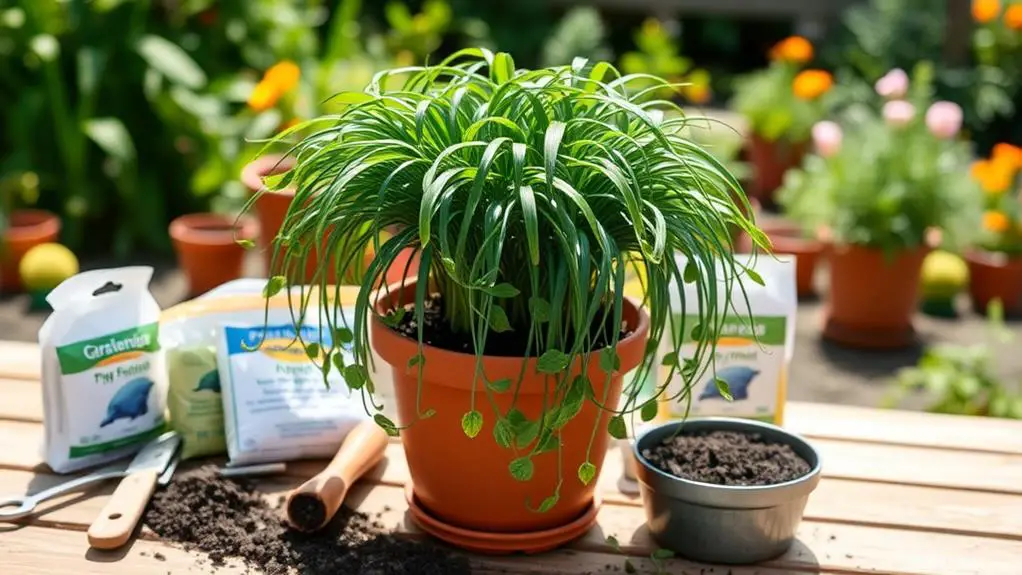
Although it may seem like a minor task, fertilization and repotting are essential for the health and growth of your String of Dolphins plant.
Fertilize your plant twice during the growing season, in spring and summer, using a balanced liquid fertilizer to keep it thriving. Avoid fertilizing in fall and winter to prevent nutrient buildup.
Repot every three years to refresh the soil and accommodate growth. Use a fast-draining succulent mix and choose a pot with adequate drainage holes to prevent root rot.
Here's a simple guide:
- Fertilize twice in spring and summer.
- Skip fertilization in fall and winter.
- Repot every three years using a well-draining soil mix.
- Increase pot size by only one size with adequate drainage holes.
This guarantees your plant stays healthy and vibrant.
Maintenance & Propagation
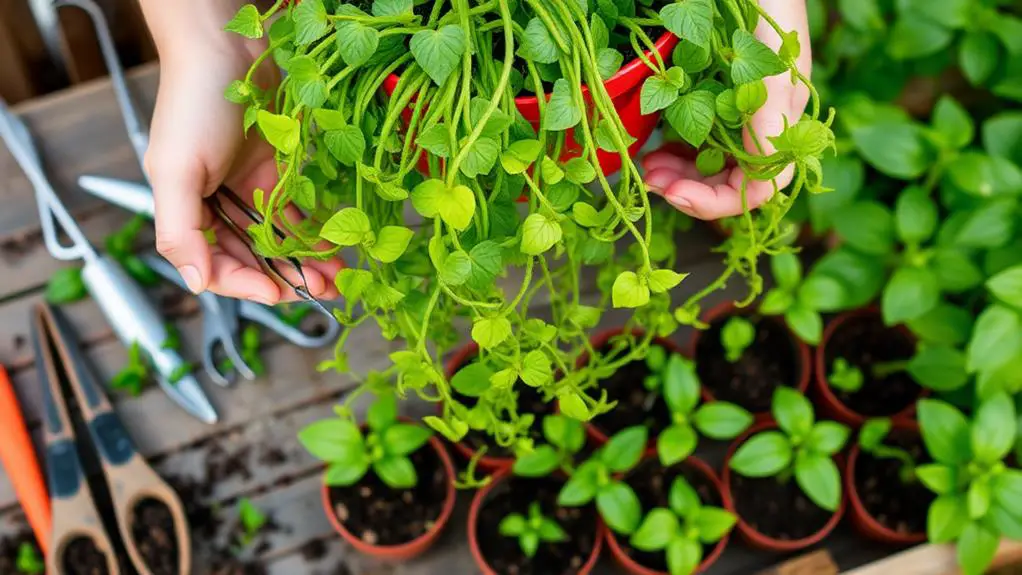
Beyond fertilization and repotting, your String of Dolphins plant also demands regular maintenance and thoughtful propagation efforts.
Start by trimming stems during the growing phase to keep your plant looking lush and healthy. For propagation, take stem cuttings with 2-3 nodes, let them dry for two days, then plant them in well-draining soil.
To maintain a healthy plant, use a succulent mix and repot every three years. When watering, use the bottom-up method to avoid root rot. Place the cuttings in a saucer with water, allowing the soil to absorb moisture, then drain the excess.
Additionally, mist the plant monthly to hydrate the leaves without soaking the soil. These steps will help you maintain a thriving String of Dolphins.
Soil Needs
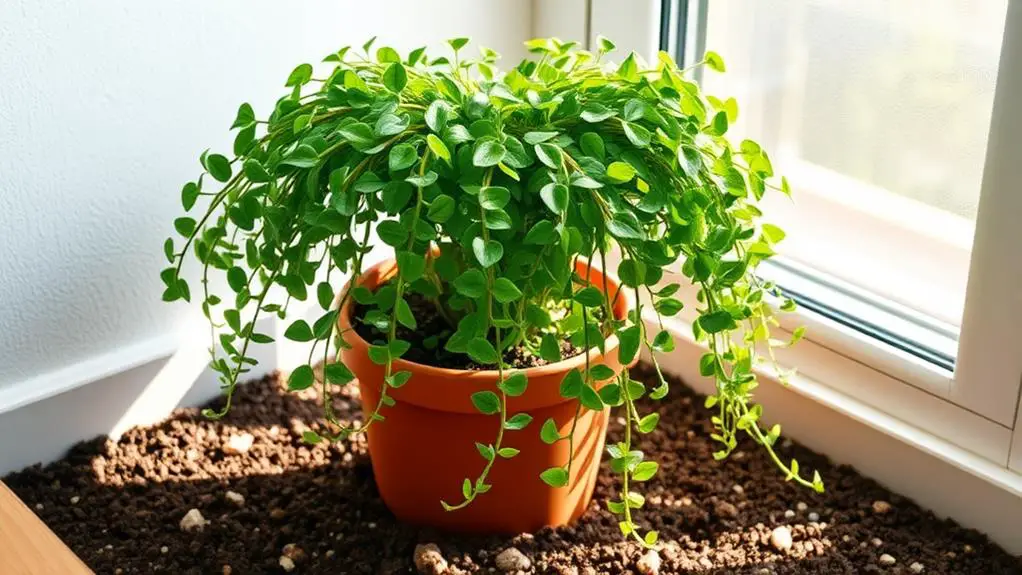
The String of Dolphins plant flourishes in well-draining soil, making a cactus and succulent mix an ideal choice.
To prevent root rot, opt for a 3:1 ratio of potting soil to sand. This mix guarantees the soil stays airy and drains well. Always use pots with drainage holes to avoid waterlogging. Let the soil dry out completely between waterings to protect the roots.
Here's a quick checklist:
- Use a cactus and succulent mix for well-drained potting.
- Confirm your pot has drainage holes.
- Allow the soil to dry out between waterings.
- Repot every 3 years with fresh potting mix.
Pests & Diseases
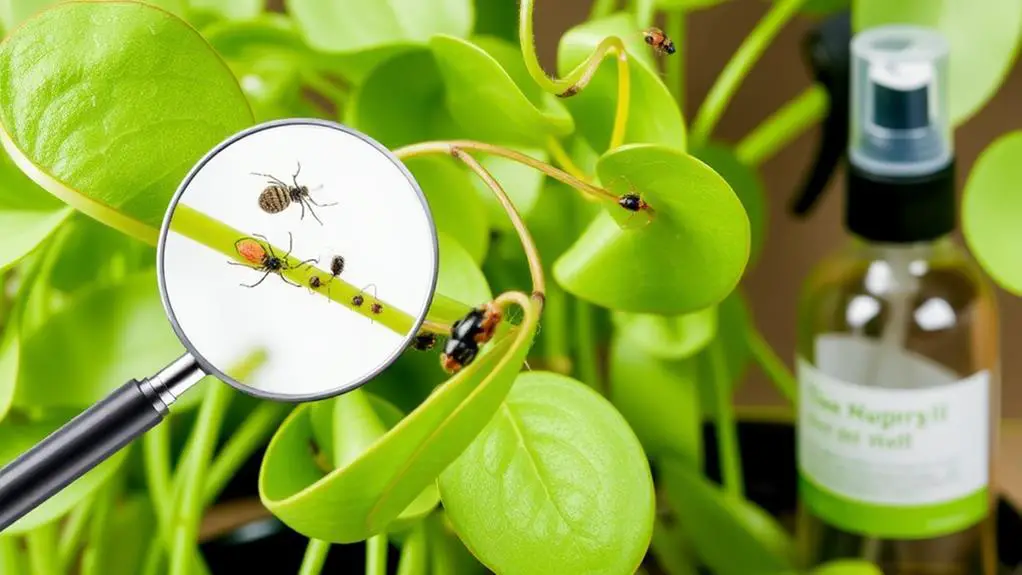
Taking care of the soil is just one part of ensuring your String of Dolphins thrives. Pests like aphids, mealybugs, and spider mites can harm your plant. Spider mites create webs under leaves, while mealybugs look like white, cottony spots. Regular checks help keep plant health in check. Root rot is your biggest enemy, often caused by overwatering and poor drainage. Monitor soil moisture and use well-draining soil to avoid fungal issues.
| Pest | Sign |
|---|---|
| Spider Mites | Webs under leaves |
| Mealybugs | White, cottony growth |
| Aphids | Clusters on new growth |
For infestations, use rubbing alcohol on mealybugs and spray cold water for spider mites. Persistent problems may need miticides or insecticidal soap.
Frequently Asked Questions
How Do You Take Care of a String of Dolphin Plant?
Place your String of Dolphins in bright, indirect light, and water when the soil is dry. Keep the temperature between 65°F and 80°F. Fertilize twice in spring and summer, and watch for pests like mealybugs and spider mites.
How Do I Make My String of Dolphins Fuller?
To make your String of Dolphins fuller, regularly prune the stems in spring and summer. Replant healthy stem cuttings with 2-3 nodes, guarantee they get bright, indirect light, and fertilize in early spring with a balanced fertilizer.
What Is the Easiest Way to Propagate String of Dolphins?
To propagate String of Dolphins, take stem cuttings with 2-3 nodes and let them dry for 2 days. Plant in well-draining soil, mist daily, or use water propagation. Once roots develop, transfer to potting mix.
How Much Sun Does a String of Dolphins Need?
Your String of Dolphins needs bright, indirect light, ideally from a south-facing window with 6 hours of sunlight daily. They can handle 2 hours of morning sun but avoid direct sun to prevent leaf burn.
Conclusion
Taking care of your String of Dolphins plant is easier than you think! Just remember the key steps: provide bright, indirect light, water when the soil is dry, and keep the temperature cozy. Don't forget to mist the plant monthly and use well-draining soil. Fertilize during the growing season and trim it regularly. Keep an eye out for pests and act quickly if you see any. With these tips, your plant will thrive and bring joy to your space!

